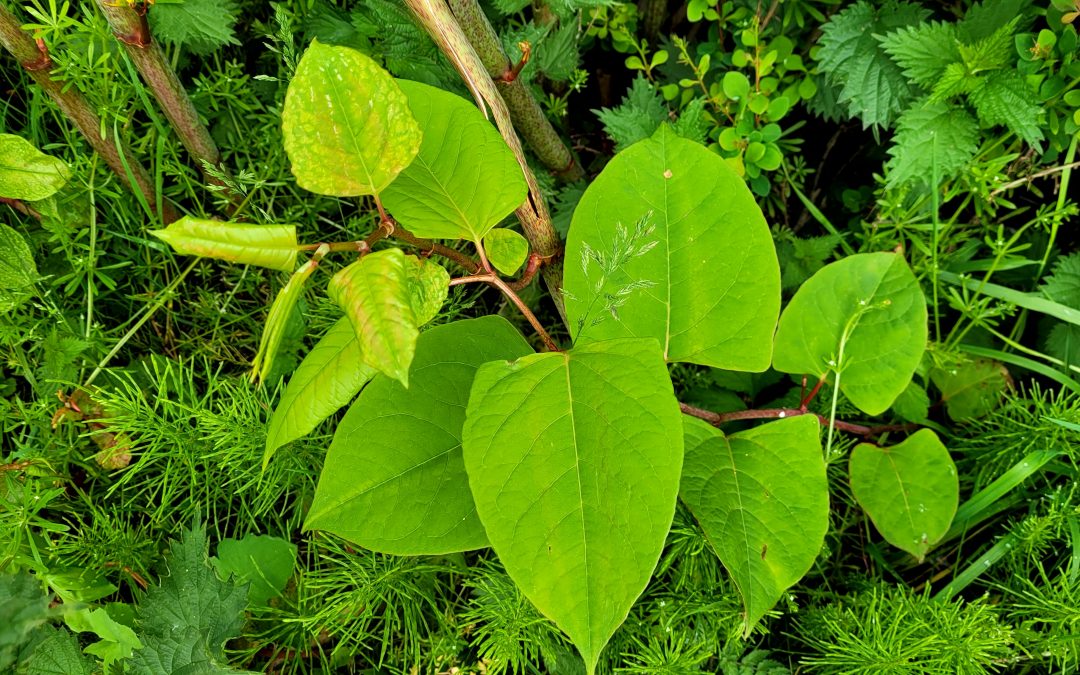Japanese knotweed is a notorious invasive plant species, and there are many misconceptions about it.
In this article, we debunk the most common myths about Japanese knotweed Debunked and provide you with accurate information.
Japanese knotweed is an invasive plant species that has gained a reputation as a nuisance due to its rapid growth and destructive nature. Despite its notoriety, there are many myths and misconceptions about this plant that can cause confusion and misinformation. In this article, we aim to debunk the most common myths about Japanese knotweed and provide you with accurate information about this invasive plant.
Myth 1: Japanese Knotweed can grow through concrete.
One of the most common myths about Japanese knotweed is that it can grow through concrete and other solid materials. While it is true that Japanese knotweed has a strong root system, it cannot grow through solid concrete. However, it can exploit weaknesses in concrete and grow through cracks and gaps.
Myth 2: Japanese Knotweed spreads solely through underground roots.
Another common myth about Japanese knotweed is that it spreads solely through underground roots. While it is true that Japanese knotweed has a vast root system, it can also rarely spread through stem fragments and seeds. These fragments can be easily transported by people, animals, or machinery, allowing the plant to spread rapidly.
Myth 3: Japanese Knotweed is impossible to get rid of.
Many people believe that Japanese knotweed is impossible to get rid of, but this is not true. While it can be challenging to control and eradicate, it is possible with the right approach. A combination of chemical treatments, physical removal, and ongoing management can be effective in controlling and eradicating Japanese knotweed.
Myth 4: Japanese Knotweed is harmful to humans.
There is a common belief that Japanese knotweed is harmful to humans, but this is not true. While Japanese knotweed can be destructive to buildings and infrastructure, it is not harmful to humans. In fact, Japanese knotweed has been used in traditional medicine for centuries and has many potential health benefits.
Myth 5: Japanese Knotweed is illegal to grow.
It is not illegal to grow Japanese knotweed, but it is illegal to allow it to spread and cause damage to the environment. In the UK, it is illegal to plant or cause Japanese knotweed to grow in the wild, and you can be fined or imprisoned for doing so. If you have Japanese knotweed on your property, you are responsible for controlling and managing it to prevent its spread.
FAQs:
Q: Is Japanese Knotweed poisonous? A: No, Japanese knotweed is not poisonous to humans.
Q: Can Japanese Knotweed damage my property? A: Yes, Japanese knotweed can damage buildings, walls, and infrastructure if left untreated.
Q: Can I remove Japanese Knotweed myself? A: While it is possible to remove Japanese knotweed yourself, it is recommended to seek professional help to ensure effective removal and prevent its spread.
Conclusion:
While Japanese knotweed is widely regarded as a problematic and invasive plant, it’s essential to note that not all aspects associated with it are negative. Here are some perspectives that provide a balanced view:
Ecological Benefits:
Japanese knotweed can contribute to ecological processes. Its extensive root system helps control erosion by stabilizing soil on steep slopes. The plant’s dense growth also provides habitat and shelter for various wildlife species.
Medicinal Potential:
Japanese knotweed contains compounds with potential health benefits. Resveratrol, found in the plant, has antioxidant properties and is associated with various health-promoting effects. However, further research is necessary to fully explore its potential therapeutic applications.
Culinary Use:
In some cultures, young shoots of Japanese knotweed are consumed as a culinary delicacy. They can be used in recipes similar to rhubarb, adding a tangy flavor to dishes like pies and jams.
Aesthetic Value:
Despite its invasive nature, Japanese knotweed can exhibit attractive foliage and vibrant flowers during certain periods of the year, adding visual interest to landscapes.
However, it’s important to approach these positive aspects with caution and balance them against the potential risks and negative impacts associated with Japanese knotweed. Its aggressive growth and ability to crowd out native plant species, cause structural damage, and impact property values are significant concerns that warrant attention and appropriate management.
To make informed decisions and effectively address Japanese knotweed infestations, consulting with professionals who specialize in its treatment and control is highly recommended. They can provide tailored guidance based on your specific circumstances and help mitigate the risks associated with this plant.
Japanese knotweed is an invasive plant species that can cause significant damage if left untreated. However, it is important to separate facts from myths and understand the true nature of this plant. By debunking the most common myths about Japanese knotweed, we hope to provide accurate information and help people make informed decisions about how to manage and control this invasive species. Remember, prevention is better than cure, and early detection and management are key to preventing the spread of Japanese knotweed.
